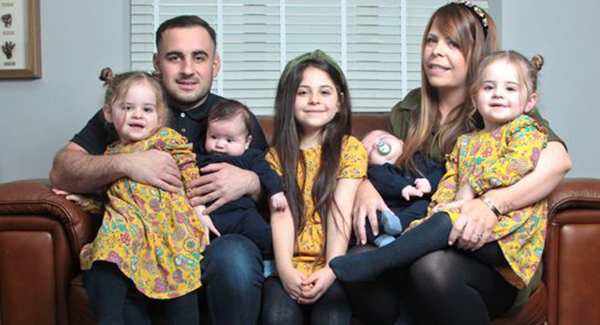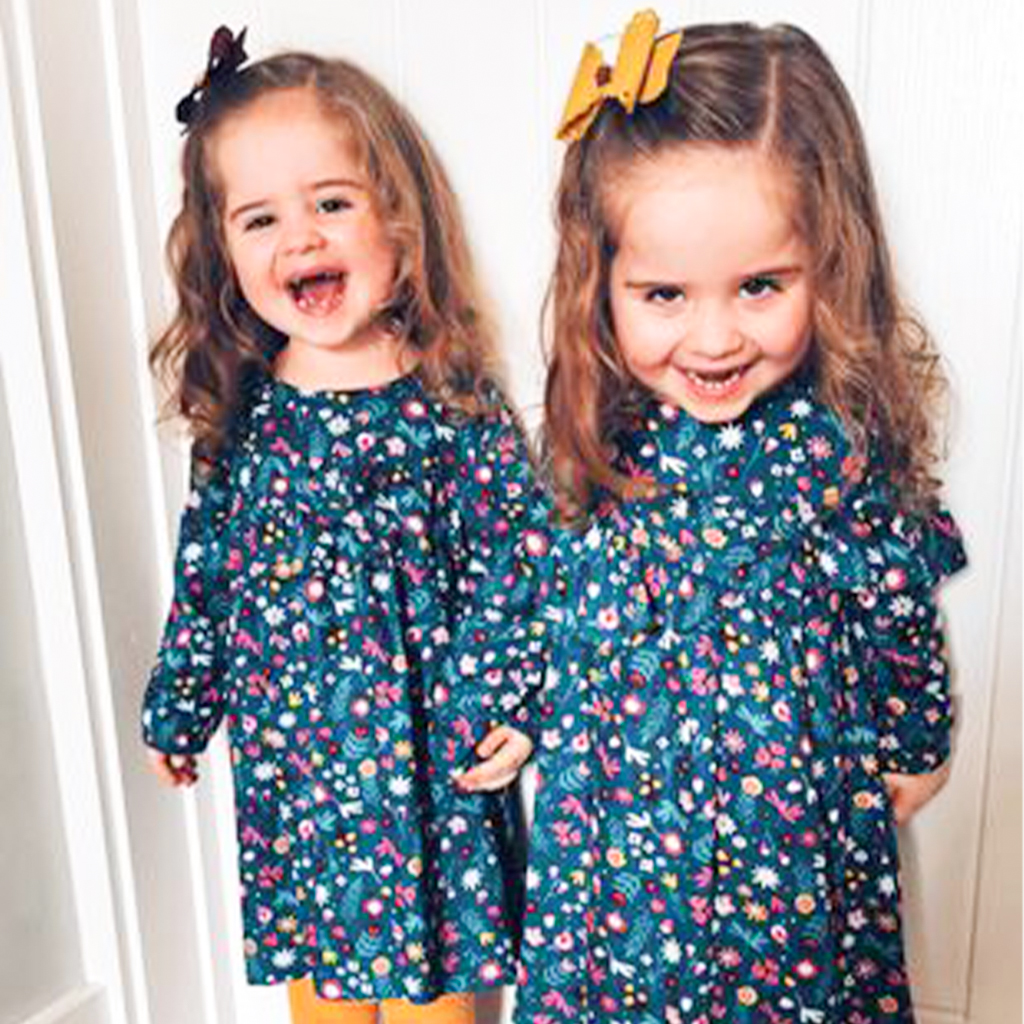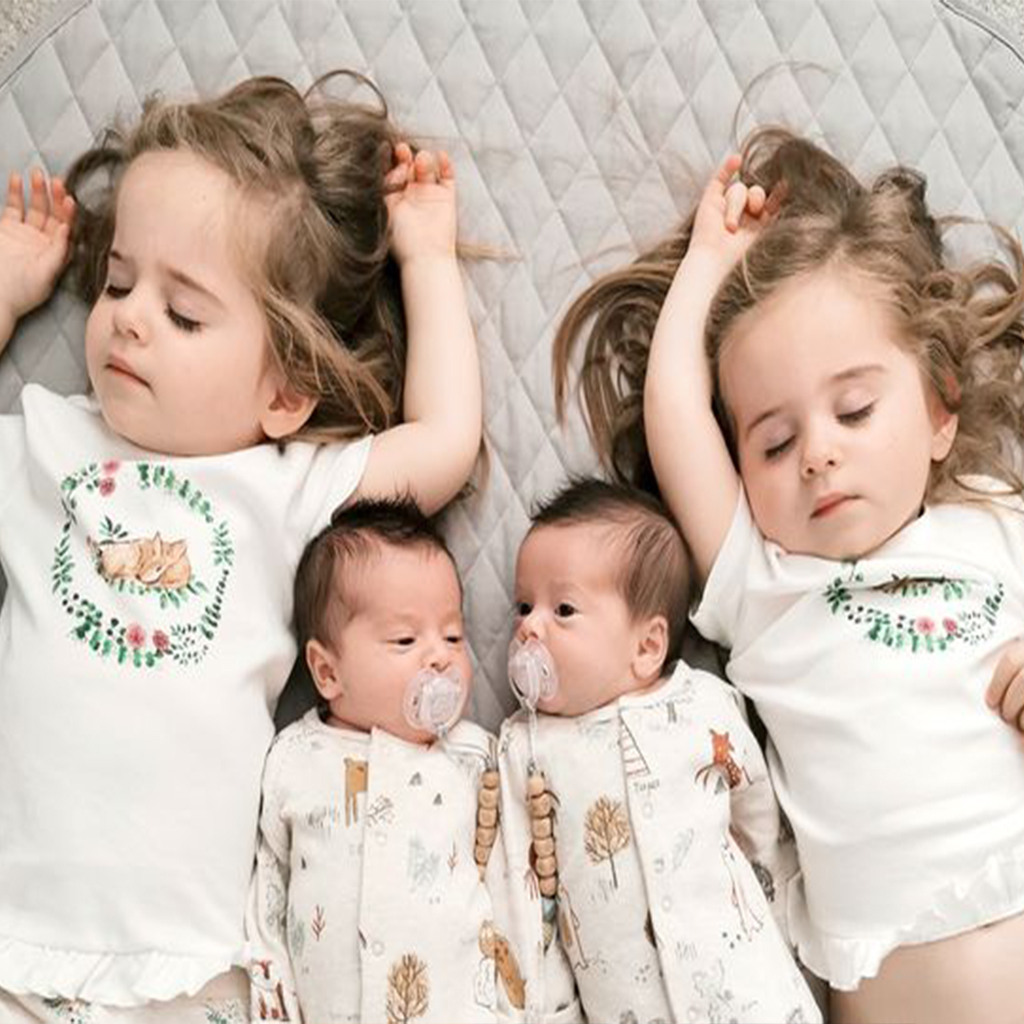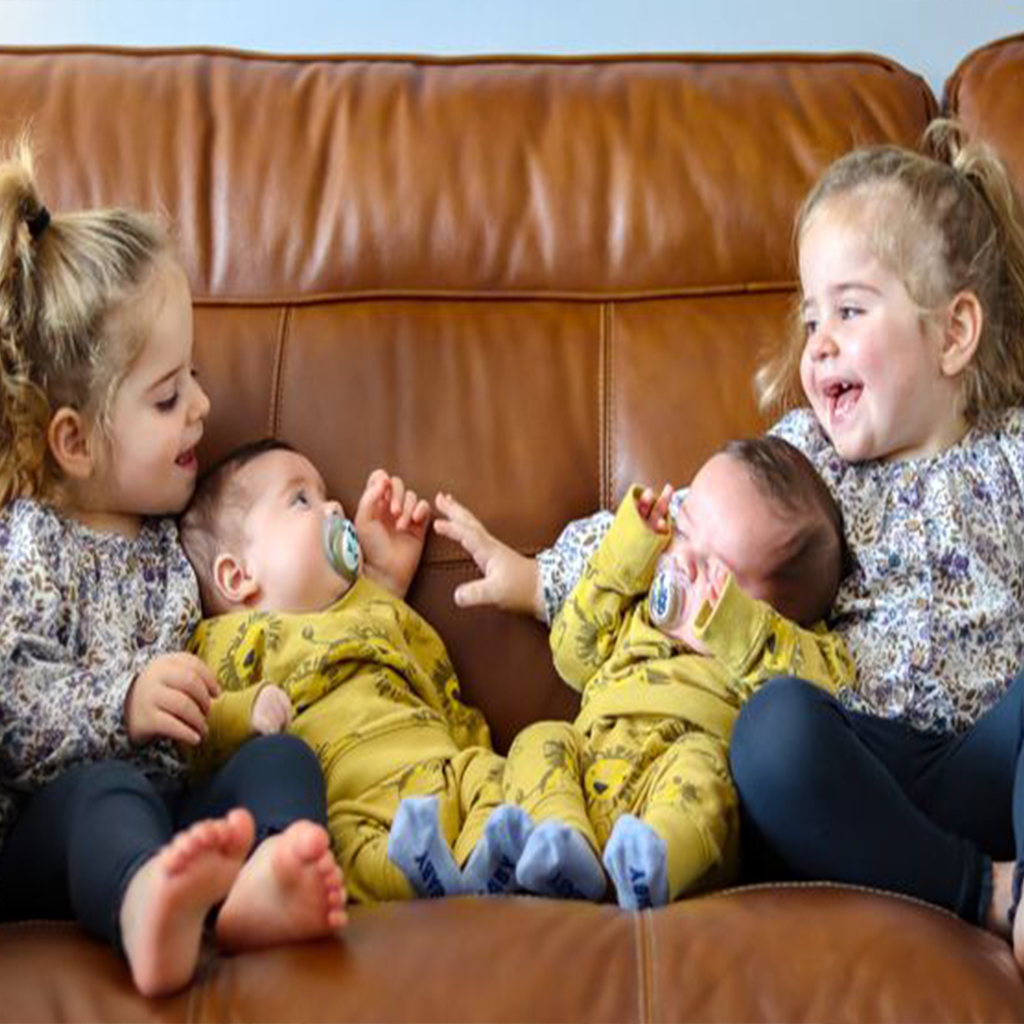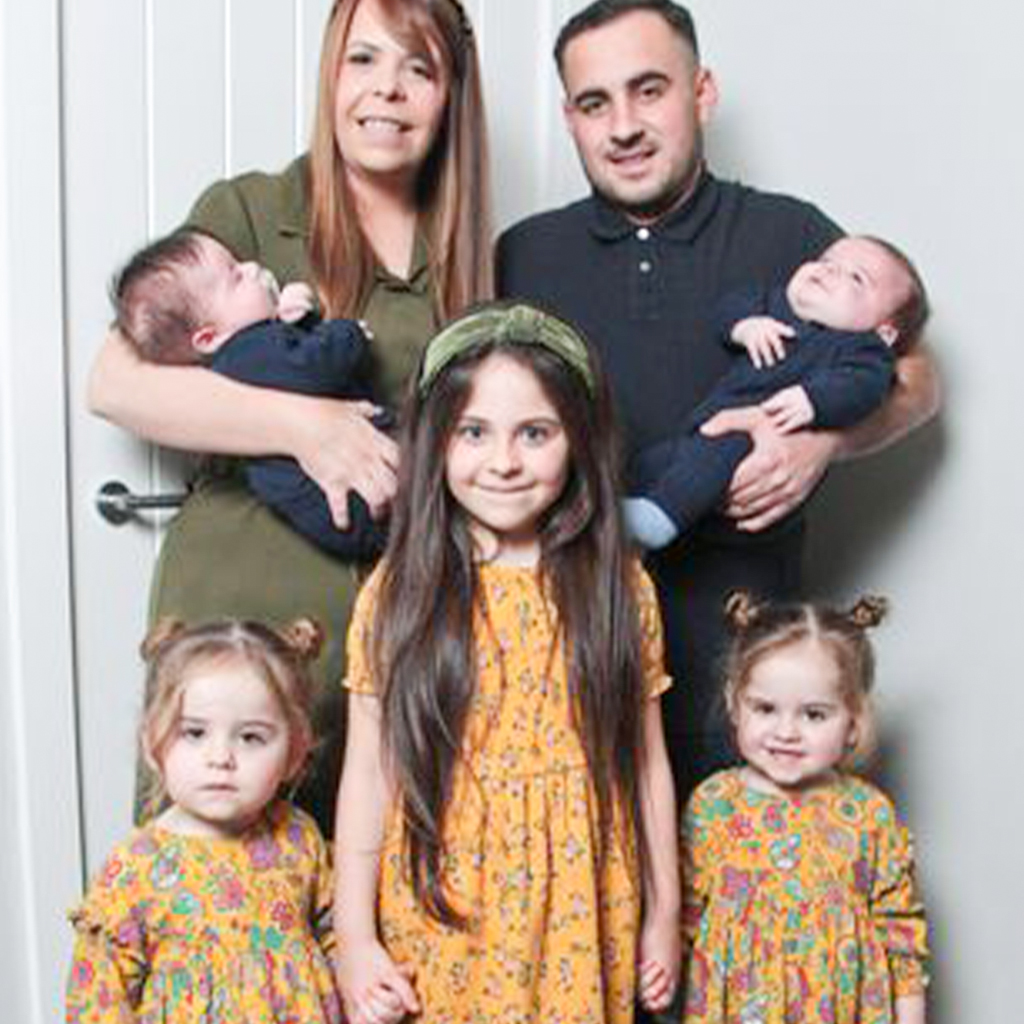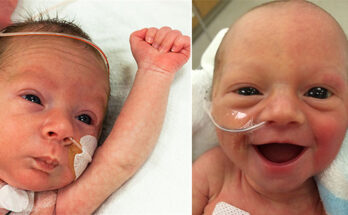Gina Shelton, 30, and her partner Olie Lloyd, 33, were stunned in March when their second natural pregnancy in three years turned out to be another set of twins. Mother-of-five People jokingly say “I’m not sitting next to you,” according to Gina, who claims to have changed more than 5,550 diapers, out of concern that they might pick up her production genes.
My family is one in a million, even though we need to buy a seven-seater automobile and have thousands of diapers. According to estimates, the likelihood of having twins in a row is one in 700,000. Phoebe, age six, Niamh and Esme, age three, and twin brothers Arlo and Alby, age three months, are Gina’s children.
As the boys get older and begin eating solid foods, Gina and Olie, a carpenter, predict that their monthly grocery bill will be close to £1,000. Gina said: ‘I never thought we’d have twins, but when I was pregnant with a baby girl, I was working in a nursery and I was very tired all the time.
We couldn’t believe it when we learned we had another set of twins a year later, and neither could our family or even our doctors. We were residing in a two-bedroom apartment at the time, and Olie was busy building a house, so I imagine we wept with joy and panic when we learned the news.
Both twins were conceived naturally and were born by C-section, so when the couple announced that a second pair was coming, their family didn’t believe it.
She said: “When we called Olie’s mom and dad to tell them the news about the second twins, they thought we were having them. They even thought we were going to send them scans. Niamh and Esme again and it’s all a joke.
Since there are “too many variables,” according to the majority of experts, it is nearly impossible to determine the odds of having consecutive twins, but some reports indicate that the rate may be around 1. over 700,000.
The Twins Trust also adds that a woman who gives birth to a set of non-identical twins is four times more likely to give birth to another set of non-identical twins than other mums.
The NHS says on its website: “In recent years, fertility treatments and the fact women are having babies later has made multiple births more common.
